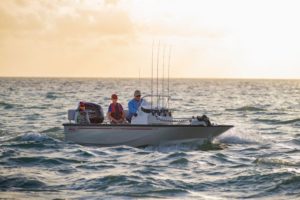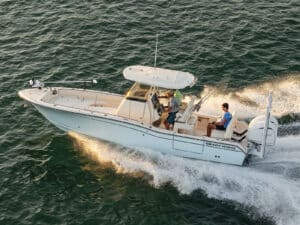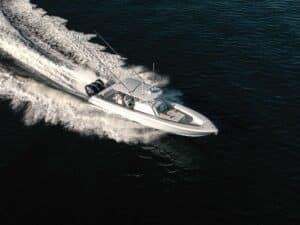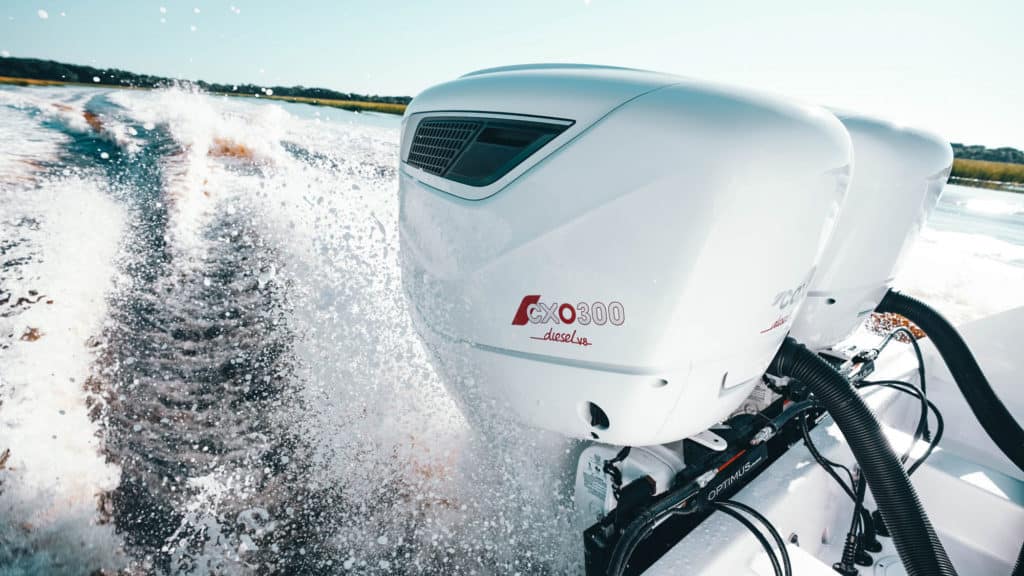
The day had finally arrived when I could test the new CXO300 diesel outboard motor from Cox Powertrain Ltd., a sea trial I had anticipated for 32 months, since attending the public debut of this landmark engine at the 2018 Fort Lauderdale International Boat Show. Developmental delays had led to postponements of this test until June 2021.
As I met Lance Henrichsen and Rayden King from Boatswain’s Locker in Alamitos Bay, California, the single CXO300 was already idling. I sniffed the air and detected no diesel exhaust odor, just the scent of briny ocean.
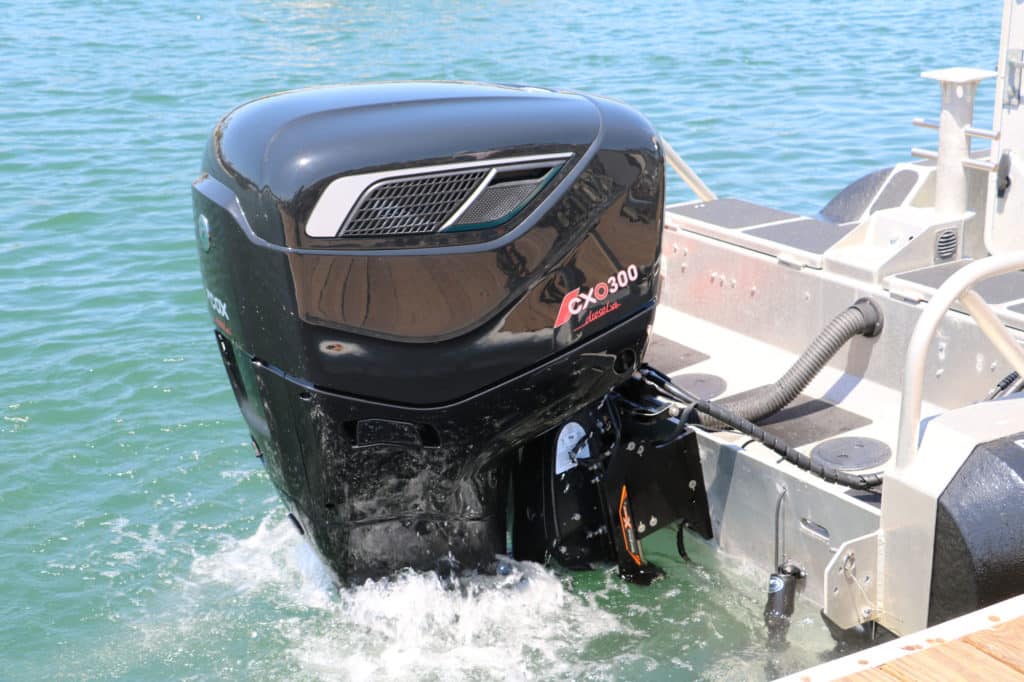
Noise Level Test
Engine noise proved very low—just 66 decibels on the A-scale at idle when measured at the helm. Absent was the typical diesel “knock.” As a point of comparison, the CXO300 emits about the same sound level at idle as I recorded when testing the Pursuit DC 326 with twin Yamaha F300 gas outboard motors. On the other hand, during my recent test of Mag Bay 42 with twin Volvo Penta D-13 turbo-diesel inboards, the sound level rumbled at 83 decibels on the A-scale at idle.
Boatswain’s Locker is the Southern California distributor for Cox Powertrain, and it rigged the CXO300 on a S25 Safe Boat, an aluminum boat with a foam collar which served as a patrol boat for the United States Coast Guard in a previous life. It weighs approximately 8,000 pounds with the engine, 55 gallons of fuel and the three-man crew. Though no longer available from Safe Boat and certainly not a typical fishing machine, this model served as an able platform for my test. Standard rigging for the CXO300 includes Dometic electronic throttle and shift controls and Optimus electric steering. The 30-inch-shaft test engine was also rigged on a SeaStar jackplate, but we left it in the full down position while gathering performance data and putting the boat and motor through its paces.
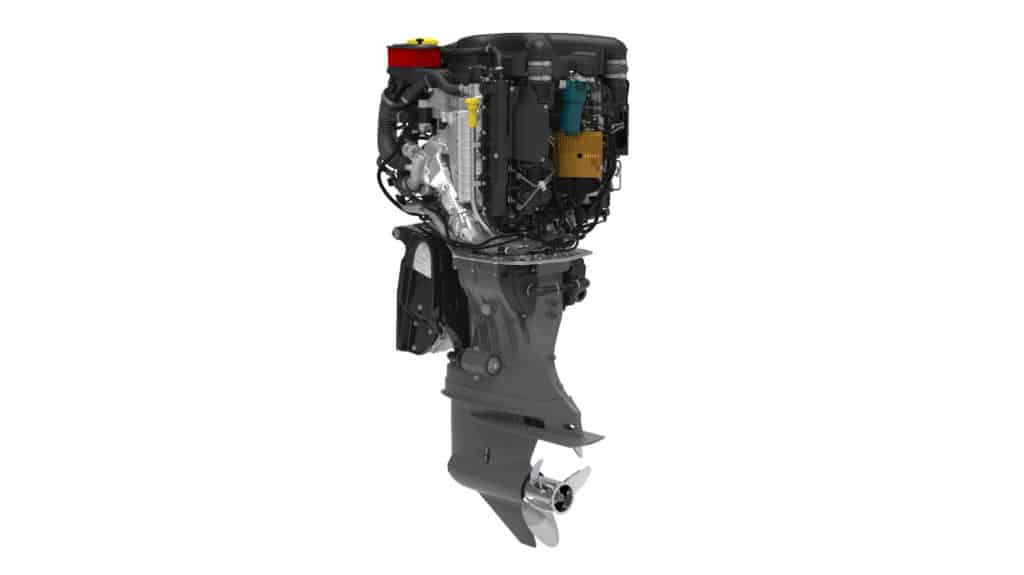
Cox Diesel Design
Cox Powertrain is a British diesel-engine company that has invested more than a decade of development in the CXO300. The twin-turbo-charged four-stroke V-8 powerhead displaces 4.4 liters and is served by a common-rail fuel injection system. Featuring a vertical orientation similar to most gas outboards, the CXO300 is built for marine applications. Another major diesel outboard brand—Swedish-built OXE—uses horizontally mounted, automotive-based diesel powerheads. Its 300 hp model, for example, sports an inline-six-cylinder 3.0-liter turbocharged diesel powerplant from BMW, which drives the propeller via a series of heavy-duty belts and pulleys.
The Cox 300 employs a conventional outboard drivetrain with a vertical drive shaft connecting the motor to the lower unit, which houses the forward and reverse gear system similar to most gas outboards. That said, drivetrain components are specially designed for commercial applications and oversized to handle the CXO300′s maximum torque of 480 foot-pounds. For perspective, peak torque for a 300 hp gas outboard is around 380 foot-pounds, which is reached at 2,500 to 3,000 rpm, according to test data from Cox.
Cox says that its engine is designed to last up to three times longer than comparable gas outboards, but only time will tell if that claim holds water.
By way of background, diesels operate at a lower engine speed (rpm). The CXO300 diesel outboard, for instance, tops out at about 4,000 rpm versus about 6,000 rpm or higher for many of today’s gas outboards. Despite the lower engine speed, diesels have greater torque so they can turn a higher gear ratio and/or larger diameter propeller to convert their torque into boat speed. There’s also the safety factor in diesel fuel, which has a much higher flash point than gasoline, and so is less prone to ignite, if there is a fuel system leak.
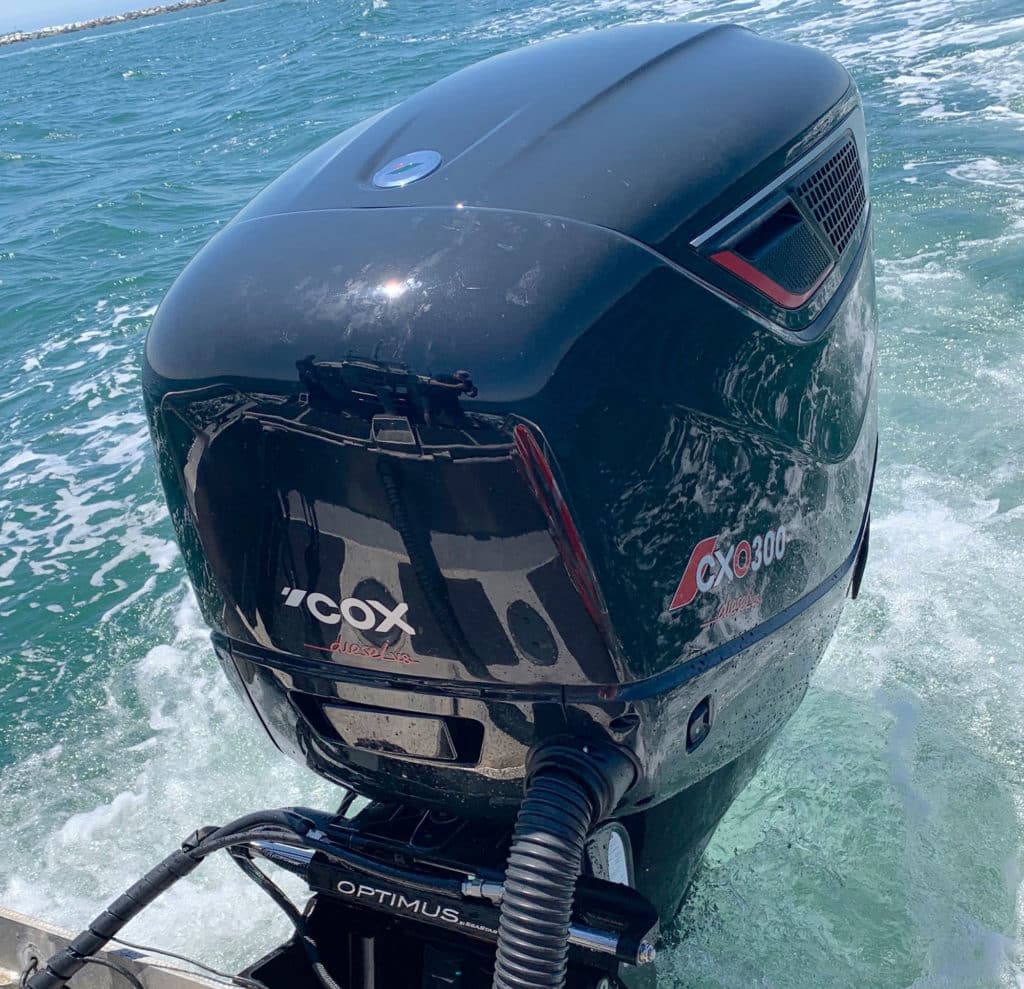
By the Numbers
We ran the CXO300 in the protected waters inside the breakwater of Long Beach Harbor to gather speed and sound levels, but S25′s PV780 Murphy engine display (part of the CXO300 rigging package) had not yet been set up to read gallons per hour, so I used data supplied by Boatswain’s Locker for the fuel consumption data and extrapolate miles per gallon.
The engine turned a 16-inch-diameter by 19-inch-pitch stainless-steel four-blade propeller from PowerTech. The Safe Boat accelerated from zero to 30 mph in an average time of 11.7 seconds, and bolted like a wahoo on the attack once the twin turbos spooled up. Time to plane was 4.5 seconds. We achieved a top speed of 40.9 mph at 4,000 rpm, where the diesel outboard burned 18.8 gallons per hour for 2.2 mpg, according to supplied fuel data.
Cox says the CXO300 offers at least a 25 percent better range than a comparable gasoline outboard. That claim is hard to confirm without a direct comparison on the same boat under the same conditions. However, CXO300 achieved its best fuel economy at 3,000 rpm and 29.7 mph with a burn rate of 8.9 gph, resulting in 3.3 mpg. That equates to a cruising range of 297 miles, based on 90 percent of the S25′s 100-gallon fuel capacity.
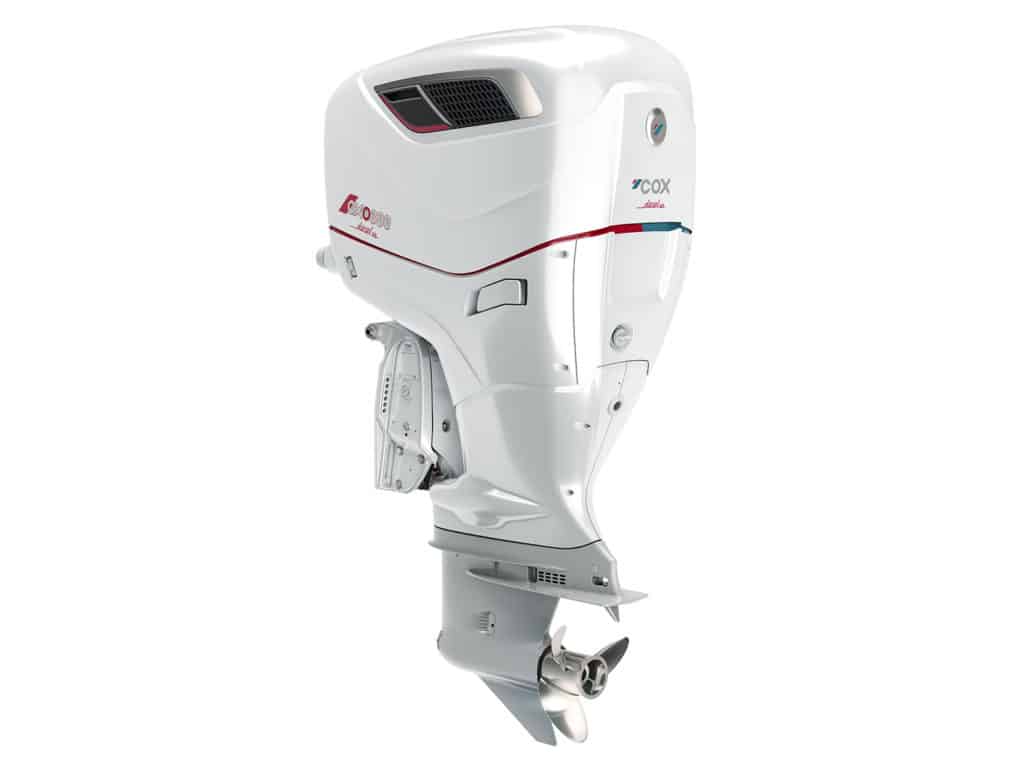
For boating anglers, slow-trolling with the CXO300 will be an issue, as the slowest speed I could achieve was 5 mph with the 1.46-to-1 gear ratio. The outboard is also available with a 1.23-to-1 gear ratio, but this ratio will only exacerbate the issue by increasing the speed at idle in gear. The Cox diesel outboard cannot be fitted with trolling valves, as can inboard diesel transmission.
Sound levels at the helm of the S25 remain comparatively low, registering 83 and 87 decibels on the A-scale at optimum cruising speed and wide-open throttle, respectively.
Read Next: Mercury Racing Unveils Optimax Diesel Outboard
The CXO300 will be offered in three shaft lengths—25, 30 and 35 inches—in both black and white exterior paint schemes. It weighs 866 pounds and carries a suggested retail price of $55,000. It is available now. Approximately 150 motors have been delivered around the world.

Pricing and Specs
| MSRP: | $55,000 |
|---|---|
| HP: | 300 |
| Displacement: | 4.4 liters |
| Weight: | 866 lb. |
| Cylinders: | V-8 |
| Compression: | 16:1 |
| Torque: | 480 ft.-lb. |
| Aspiration: | Twin turbo-chargers |
| Gear Ratio: | 1.46:1 or 1.23:1 |
| Emission Compliance: | EPA Tier III |
Performance*
- Load: 55 gal. fuel, three crew members aboard Safe Boat S25
- Time to 30 mph: 11.7 sec.
- Top Speed: 40.9 mph @ 4,000 rpm
- Best MPG: 3.3 mpg @ 29.7 mph (3,000 rpm)
Notable Features
- Carbon fiber engine hood reduces weight
- Dometic Optimus electric steering system
- Electronic throttle and shift
- Keyless fob offers remote starting and serves as an engine cut-off switch
- Thermostatically controlled raw-water cooling
- NMEA 2000 compatible
Cox Powertrain Ltd.
Shoreham-by-Sea, United Kingdom
+44(0)1273 454 424

